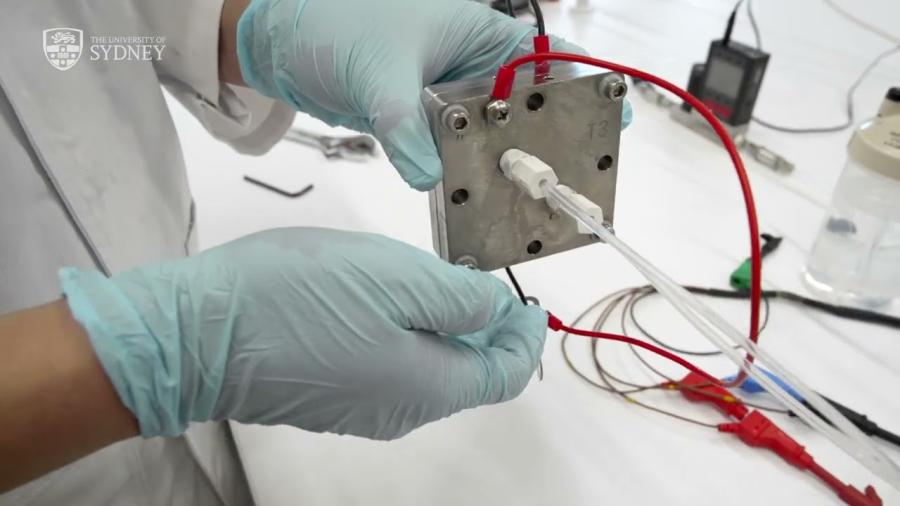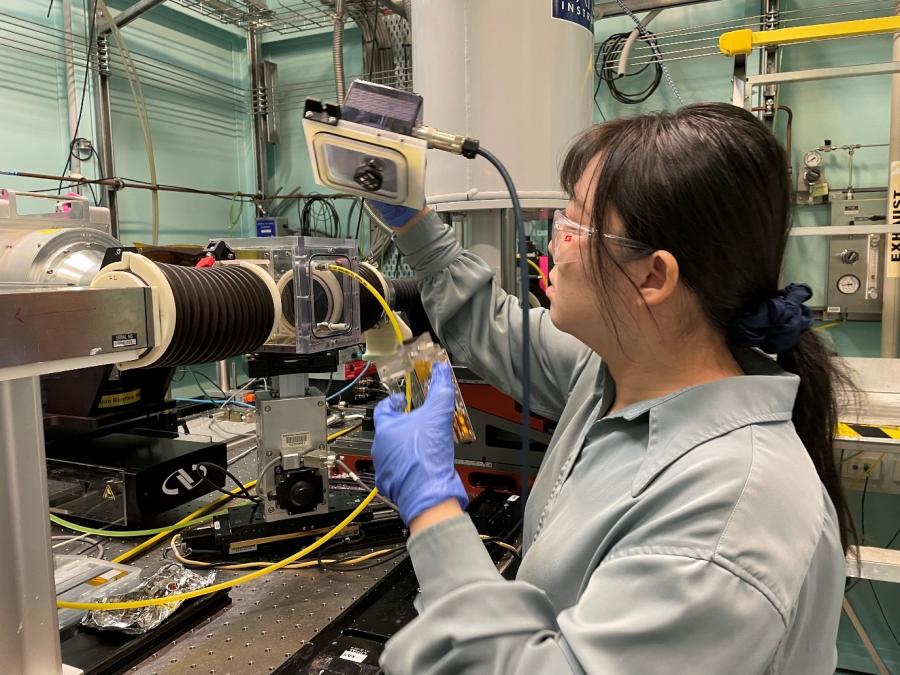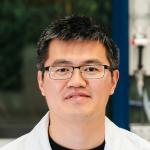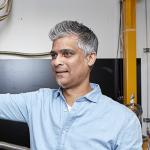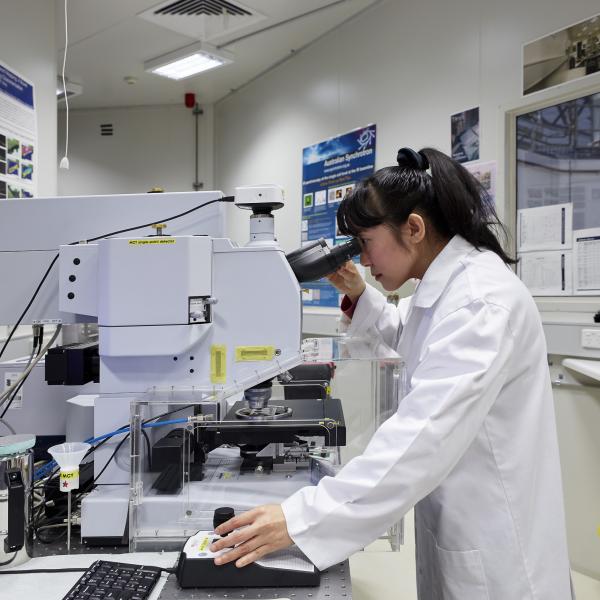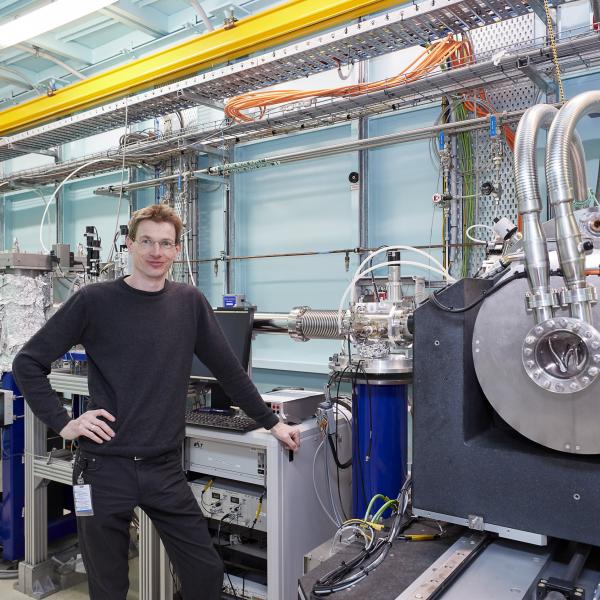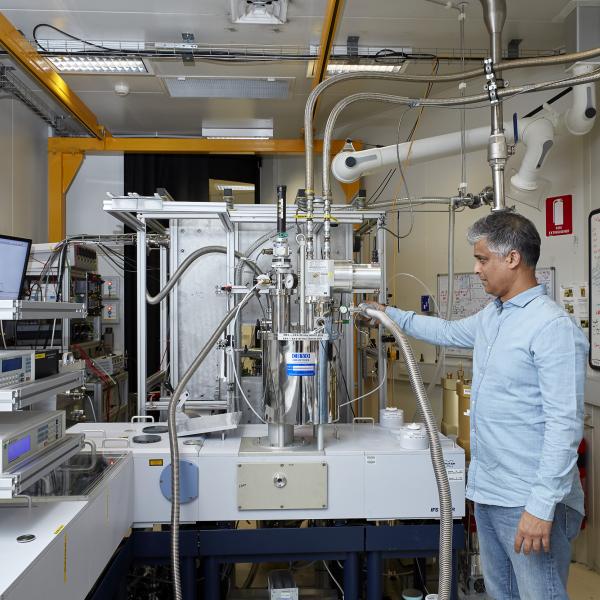
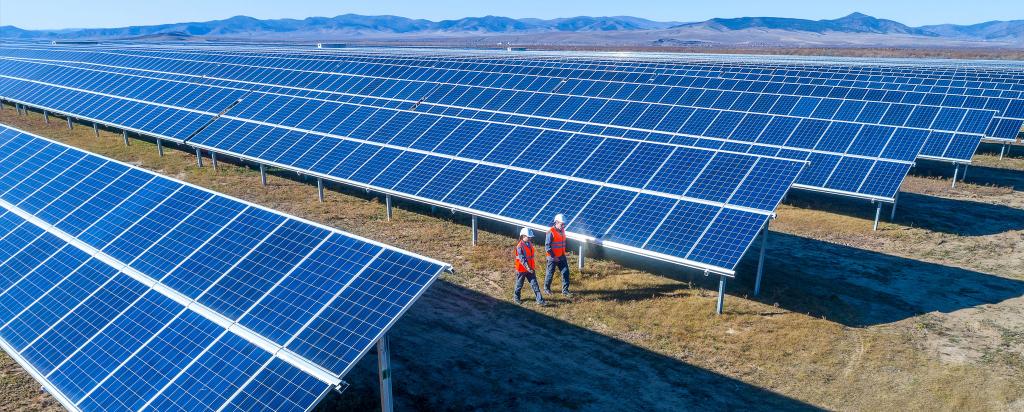
Published on the 14th August 2023 by ANSTO Staff
For National Science Week with a theme of innovation, we are showcasing the work of an Australian innovator in energy and sustainability, Dr Fengwang Li.

Dr Li is a great proponent of the usefulness of beamlines at ANSTO’s Australian Synchrotron in his approaches to the novel design of organic-inorganic hybrid materials and copper metal catalysts for carbon capture and the synthesis of useful products using renewables.
Lecturer and ARC Discovery Early Career Research Fellow with the School of Chemical and Biomolecular Engineering at the University of Sydney, Dr Li has earned the Early Career Research Prize as part of the EurekaPrizes.
The award recognises scientific rigour and innovation, originality, significance impact and benefit in an early career scientist.
Among other achievements, Dr Li has created an affordable and more efficient process using an electrolysis technology to convert captured carbon dioxide (CO2) emissions into ethylene, a basic manufacturing component. This improved process brings real-world carbon capture and utilisation a step closer by offering emission-intensive industries a path towards net-zero.
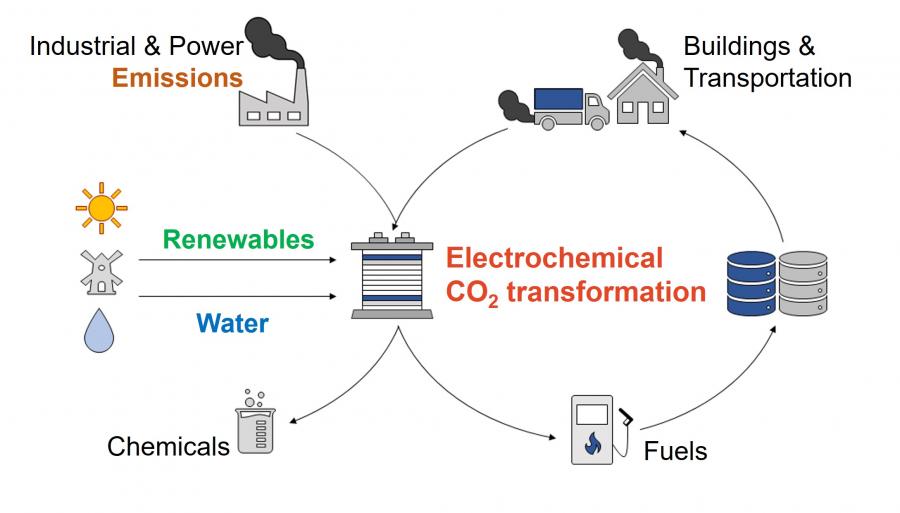
Electrochemical CO2 transformation enables a circular economy
“The biggest challenge of my generation is to address the global warming issue related to CO2 emissions. I wanted to start from an engineering perspective because it goes straight to a potential intervention,” said Dr Li.
“As it's likely that industry has an increasingly important role in reducing emissions and the motivation for industry will always be commercial, we need a strategy. We know that capturing CO2 does not generate much monetary value and involves investment costs.
“So, what my group is trying to do is to convert the captured CO2 into a valuable commodity, such as a chemical by-product. Then, industry could have revenue from a high-value product, such as ethylene, or ethanol.”
Ethylene forms compounds that are widely used in manufacturing processes.
“And, if you want to have a long-term storage of renewable energy for transport purposes, a chemical with a high density in energy, may be a better option,” said Dr Li.
In 2022, Dr Li received an Early Career Researcher Grant from the Australian Institute of Nuclear Science and Engineering (AINSE) to develop a new capability for in situ characterisation on the Infrared Microspectroscopy (IRM) and the Terahertz/Far-Infrared (THz/Far-IR) beamlines.
“Because we didn’t have an in situ capability at that time, Fengwang decided to design the sample environment to answer crucial questions in his research on a new class of copper-based coordination polymer catalysts he was developing,” explained IRM Senior Beamline Scientist Dr Pimm Vongsvivut.
He was attempting to resolve the lack of catalysts and reactors that enable a central reaction, the CO2 reduction reaction, and provide a system that operated with high product selectivity and system stability.
“It is very complex to make the process more efficient,” said Dr Li.
“Because we were using a catalyst, we needed to understand the oxidation states, the coordination environment, the interaction with the CO2 molecule and the local environment with reaction intermediates,” said Dr Li.
Previously, he had custom-designed and built an in situ reactor for use at the X-ray Absorption Spectroscopy (XAS) Beamline. However, given the intense and highly focused nature of the beam at the XAS Beamline, long exposure to the beam can become problematic for sample integrity.
“In situ XAS experiments will normally require beam-on-sample for an extended period of time. There are ways to mitigate possible radiation damage to the sample, one of which is to constantly flow the liquid sample through the beam path, thus exposing different parts of the same sample to the beam during the XAS investigations.
"However, this is not always possible, and recently the beamline has invested significant resources into enabling energy slew scanning, which essentially means much faster scan times (up to 10 times faster) compared to traditional scans. This places the XAS Beamline at the forefront of beamlines internationally”, said Dr Bernt Johannessen, a Senior Scientist at XAS.
To complement investigations using XAS, Dr. Li added IRM and the THz/Far-IR beamlines to his repertoire. He proceeded with developing in situ reactors for these instruments as well.
These investigations clarified if the coordination between the metal centre and ligands in the catalyst changed and led to the decay of ethylene selectivity.
“The development of this capability is a great addition to the beamline, and electrochemical storage and conversion investigations, in particular,” said THz/Far-IR Beamline Scientist Dr Dominique Appadoo.
The design and testing of these characterisation capabilities was extended more broadly to benefit the research community both in Australia and overseas, who were working in electrochemical storage and conversion.
Dr Li has already earned numerous awards and honours including being among the World’s Top 2% Scientists since 2020, ranked by Stanford University; University of Sydney Research Accelerator (SOAR) Prize (2023); Royal Society of Chemistry Nanoscale Emerging Investigators award (2022); and inclusion in the MIT Technology Review 35 Innovators Under 35 (China) (2021).
“Fengwang is an exceptional scientist who has used our facilities many times and has mastered applying the analytical power of synchrotron techniques to his investigations with great success. Now it is his students who come here to support the research. We congratulate him on this well-deserved nomination,” said Prof Michael James, the Acting Director of Australian Synchrotron.
Read more about Dr Li's technology: https://doi.org/10.1002/adma.202209567.
The Eureka Prizes ceremony will be be broadcast live on 23 August. Register here
